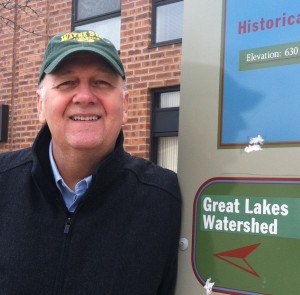
Gary Wilson
Commentary
Arguably the most powerful book I’ve read with connections to the Great Lakes was Nancy Nichols’ Lake Effect: Two Sisters and a Town’s Toxic Legacy.
Nichols was raised near Waukegan Harbor north of Chicago, a toxic site that was once labeled the “worst PCB mess in the country.” (Quick disclosure. In 2003 I volunteered on the Waukegan Harbor Citizen Advisory Group.)
Nichols and her sister Sue contracted cancer and her sister died from the disease. The book chronicles her unprovable but powerful belief that their cancer was attributable at least in part to living in close proximity to the PCB-laden harbor.
Lake Effect is compelling on all fronts, but what sets it apart is the author’s refusal to accept the role prescribed for her by the cancer industry – that of “cancer survivor.” She does not want to be described as the warrior who battled the disease and won.
Instead she prefers to ask why there is so much emphasis by the cancer community — and all of us — on finding a cure versus focusing on prevention in the first place. “Society loses out when we ignore the cause to find the cure,” Nichols says.
I read Lake Effect on its release in 2008 but was prompted to revisit it this week after listening to Michigan Public Radio’s cancer and the environment series.
In putting a spotlight on the need to focus on prevention, the station notes that as caring citizens, we’ll wear pink ribbons, walk and run forever to support people diagnosed with cancer.
But much more needs to be done on prevention.
It’s like we’ll do anything for you if you get sick but not as much to keep you from getting sick.
This seems like a perverse alignment of priorities.
We often take the same path when it comes to Great Lakes environmental issues. Here’s an example.
We’ve dawdled and debated for years about implementing tough ballast water regulations that will keep invasive species at bay — prevention. Instead we choose to spend $200 million a year trying to control their spread after they arrive — the cure.
Back to the issue of toxic hotspots — 40 out of 43 identified by the U.S. and Canadian governments remain in the  Great Lakes.
Great Lakes.
To be sure, there has been some progress and they have long been a priority for environmental groups.
The EPA’s top Great Lakes adviser, Cameron Davis, was working hard as an advocate to clean up Waukegan Harbor long before he went to work for the EPA.
And there is finally starting to be a trickle of money and attention to these sites. White Lake in western Michigan is on the cusp of a cleanup thanks to an influx of federal funding and the dogged work by local citizen groups.
But it’s only a start.
Significant progress will only come if we demand that the toxic sites are given the highest possible priority in the competition for scarce resources.
But we have to do it because wearing pink ribbons isn’t enough.We should be better than that.
There are millions of people living near these toxic sites.
Just as Nancy Nichols and her sister lived near the “PCB mess” that is Waukegan Harbor.
